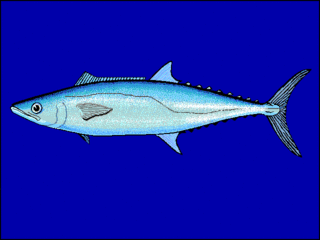
Kronosaurus is an extinct genus of large short-necked pliosaur that lived during the Aptian to Albian stages of the Early Cretaceous in what is now Australia. The first known specimen was received in 1899 and consists of a partially preserved mandibular symphysis, which was first thought to come from an ichthyosaur according to Charles De Vis. However, it was 1924 that Albert Heber Longman formally described this specimen as the holotype of an imposing pliosaurid, to which he gave the scientific name K. queenslandicus, which is still the only recognized species nowadays. The genus name, meaning "lizard of Kronos", refers to its large size and possible ferocity reminiscent of the Titan of the Greek mythology, while the species name alludes to Queensland, the Australian state of its discovery. In the early 1930s, the Harvard Museum of Comparative Zoology sent an organized expedition to Australia that recovered two specimens historically attributed to the taxon, including a well known skeleton that is now massively restored in plaster. Several attributed fossils were subsequently discovered, including two large, more or less partials skeletons. As the holotype specimen does not present diagnostics to concretely distinguish Kronosaurus from other pliosaurids, these same two skeletons are proposed as potential neotypes for future redescriptions. Two additional species were proposed, but these are now seen as unlikely or belonging to another genus.

Scomberomorus is a genus of ray-finned bony fish in the mackerel family, Scombridae. More specifically, it is a member of the tribe Scomberomorini, commonly known as the Spanish mackerels.

Scomberomorini is a tribe of ray-finned saltwater bony fishes that is commonly known as the Spanish mackerels, seerfishes or seer fish. This tribe is a subset of the mackerel family (Scombridae) – a family that it shares with four sister tribes, the tunas, mackerels, bonitos, and the butterfly kingfish. Scomberomorini comprises 21 species across three genera. They are pelagic fish, fast swimmers and predatory in nature, that fight vigorously when caught. They are mainly caught using hooks and lines.

Phareodus is a genus of freshwater fish from the Paleocene to the Eocene of Australia, Europe and North and South America.

The Queensland school mackerel is a species of fish in the family Scombridae. It is found in tropical waters of the western Pacific, largely confined to inshore coastal waters of southern Papua New Guinea and northern and eastern Australia, from Shark Bay and Onslow, Western Australia to Sydney, New South Wales. Queensland school mackerel commonly occur in waters down to 100 m, usually to 30 m, in depth. Specimens have been recorded at up to 100 cm in length, and weighing up to 12.2 kg.

Murexsul queenslandicus is a species of sea snail, a marine gastropod mollusk in the family Muricidae, the murex snails or rock snails.
Euepicrius is a genus of mites in the family Ologamasidae.
Euepicrius femuralis is a species of mite in the family Ologamasidae.
Euepicrius lootsi is a species of mite in the family Ologamasidae.
Euepicrius multipori is a species of mite in the family Ologamasidae.
Notonomus queenslandicus is a species of ground beetle in the subfamily Pterostichinae. It was described by Sloane in 1902.
Acarodynerus queenslandicus is a species of wasp in the family Vespidae. It was described by Giordani Soika in 1962.

Xylocoris is a genus of bugs in the monotypic tribe Xylocorini of the family Anthocoridae. There are approximately 50 described species in Xylocoris worldwide. Nearly 30 species occur in the Palaearctic Region, 10 are known from the Nearctic Region, and 6 from the Oriental Region. They occur in various habitats, often found under plant litter and under tree bark where they feed on small arthropods. Certain species inhabit stored food facilities.
Uncinocarpus queenslandicus is a species of microfungi that grows in soil and keratinous materials, such as hair. It was the fourth species to be designated as part of the genus Uncinocarpus. Its name is derived from the Australian state of Queensland, where it was first isolated.
Eiectus is a potentially valid genus of extinct short-necked pliosaur that lived in the Early Cretaceous period. Fossil material has been recovered from the Wallumbilla Formation (Aptian) of Queensland was initially classified under the related genus Kronosaurus until 2021.

Rubus queenslandicus, commonly known as bramble-of-the-cape, rose-leaf bramble, or native raspberry, is a plant in the rose family Rosaceae which is endemic to a small part of northeastern Queensland, Australia, where it is found on the margins of highland forest. Prior to 1997, collections of this plant were identified as either R. rosifolius, R. fraxinifolius or R. muelleri/R. probus.
Tyrannochthonius queenslandicus is a species of pseudoscorpion in the Chthoniidae family. It is endemic to Australia. It was described in 1969 by Austrian arachnologist Max Beier.
Pseudotyrannochthonius queenslandicus is a species of pseudoscorpion in the Pseudotyrannochthoniidae family. It is endemic to Australia. It was described in 1969 by Austrian arachnologist Max Beier.
Sundochernes queenslandicus is a species of pseudoscorpion in the Chernetidae family. It is endemic to Australia. It was described in 1975 by Austrian arachnologist Max Beier.
Megachernes queenslandicus is a species of pseudoscorpion in the Chernetidae family. It was described in 1948 by Austrian arachnologist Max Beier.







